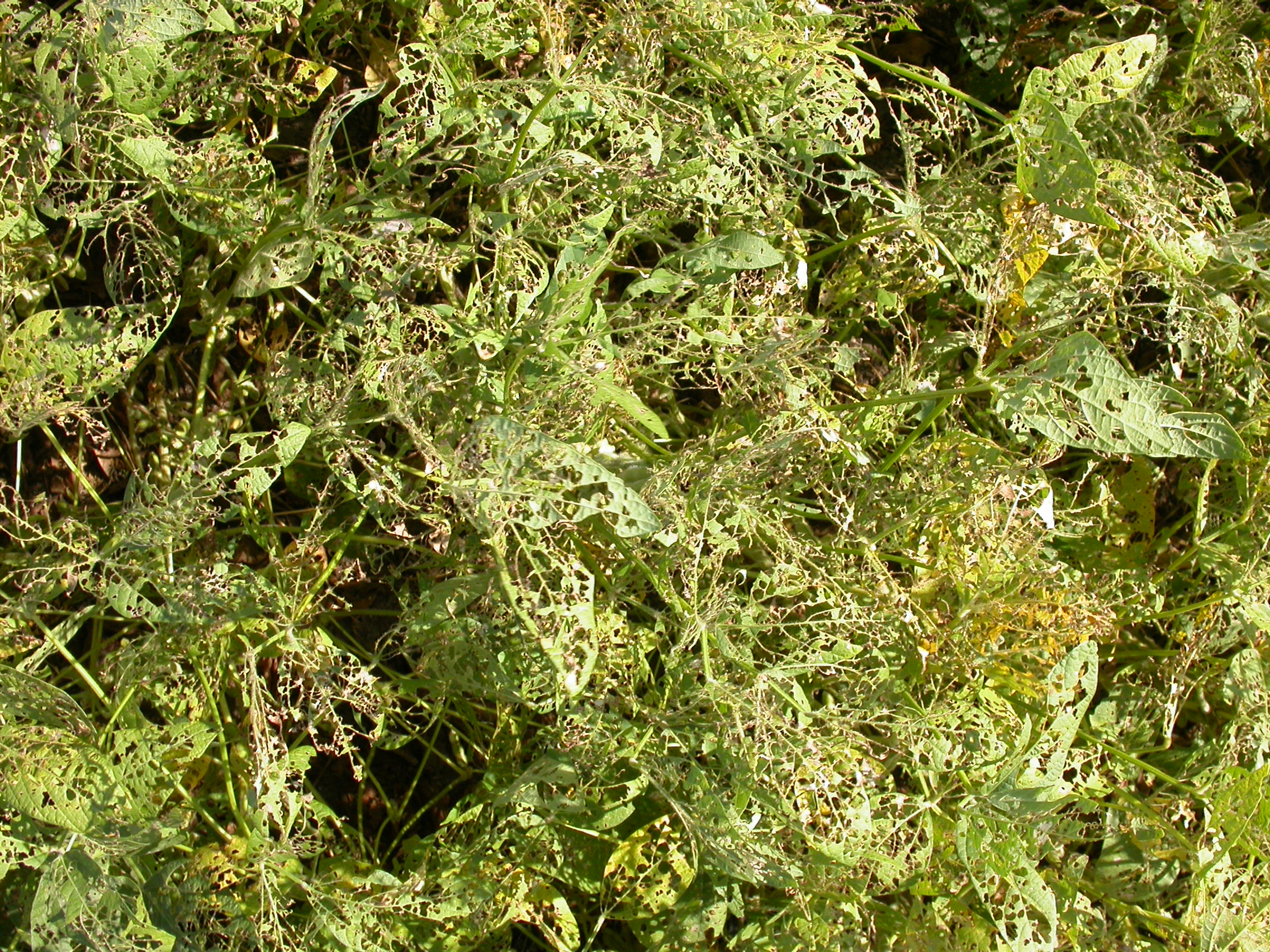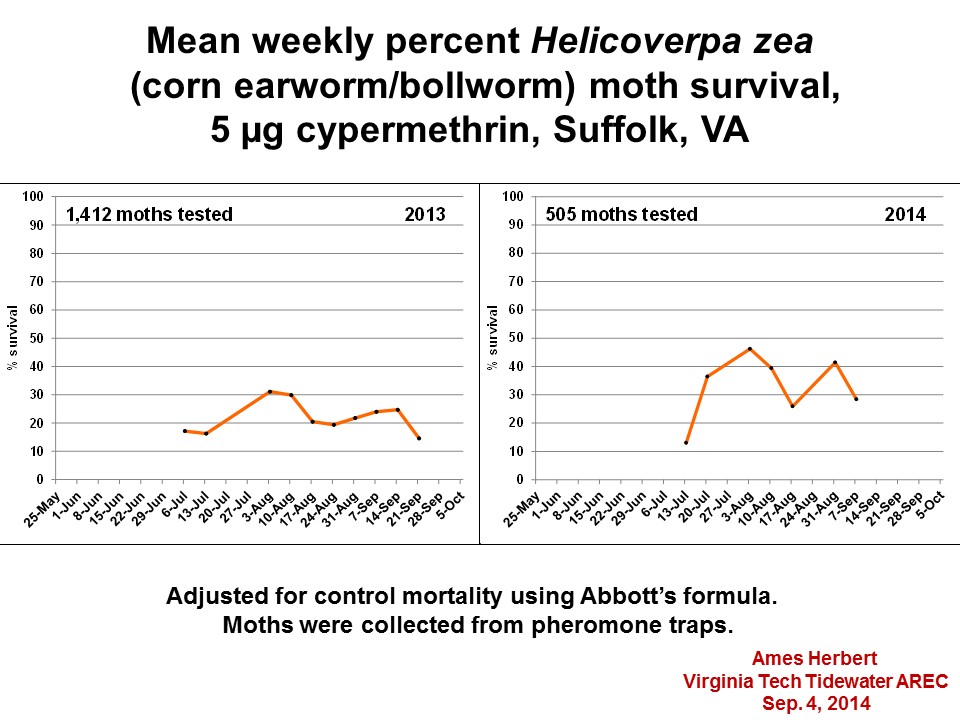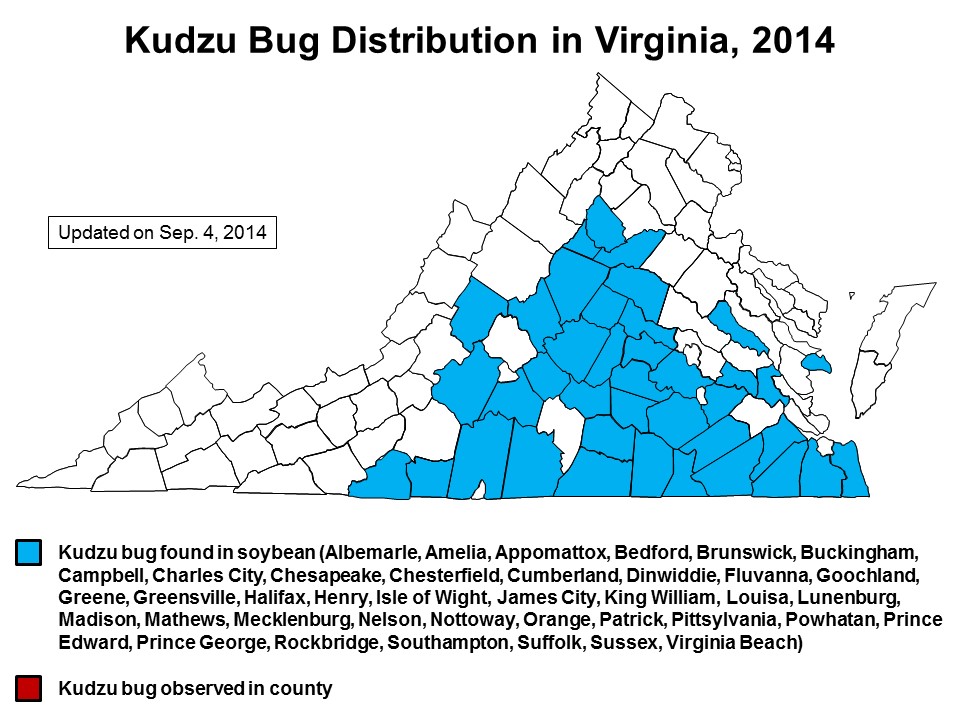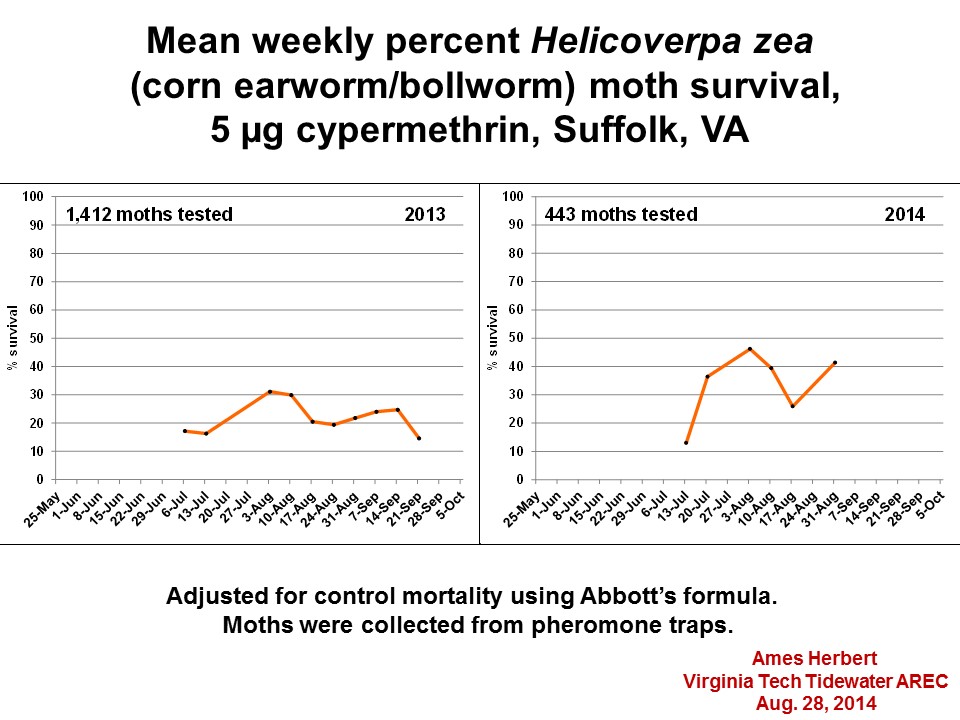As you may have heard, reports out of northeastern North Carolina are talking about infestations of plant bugs (Lygus) causing a symptom called “black flag” by feeding on presquare cotton. This is very rare in US cotton. This symptom is termed “black flag” due to the death and blackened appearance of the expanding terminal leaves. The danger is creating “crazy cotton”, which is loss of apical dominance, causing multiple terminals per plant, delayed squaring, or yield loss. Terminals can be destroyed from only 20 minutes of feeding.
But it is important to remember that given good conditions, cotton can recover later in the season without yield loss. We did research earlier in Virginia that showed that even this far north, cotton can easily compensate from removal of squares—even up to 20 percent—so this black flag injury may not be as big a threat as you may be thinking it is.
The plant bugs that are causing this problem are from a generation that developed on weeds and is moving through the system. It is important to keep in mind that plant bug infestations are very erratic. Some fields may be infested, or even some areas within a field—but not every field. We and others have checked a lot of cotton fields in Virginia and are finding just a few with very limited amounts of black flag.
We don’t want to overreact to this and spray all of our cotton just because we have seen this problem in a few plants in one area. If you do see these symptoms you should use a sweep net to see if plant bugs are still present (see recommendations below). Overreacting could certainly help flair other problems as well as waste money if plant bugs are not present at damaging levels.
Management on presquare cotton (borrowed from NCSU)
1. Use a sweep net to make 25 sweep samples and count the adults. Realize that bug numbers will be higher in field edges, so move around. A sample of 25 sweeps per location (one set of 25 “swooshes”) should be adequate.
2. Where you sweep, look for black flag, wilted leaves, or injured terminals. If you see this injury, and have plant bugs present, spray if the number of injured terminals is greater than 1 plant in 10 feet of row (borrowed from Mississippi State). If you do decide to spray, use a neonicotinoid at the highest labeled rate at this point in the season. They tend to be less effective as the season goes on, but should do the trick, while preserving some beneficials. Examples include Admire Pro, Belay and Centric. DO NOT use an organophosphate or pyrethroid this early in the season. These will kill the beneficials and could help flare spider mites and/or aphids. We are seeing some of both in a few fields so the risk of flaring these pests is pretty high—and would be very costly.
3. Monitor the situation after the spray. A visit and sweeping 24 hours following the spray should give you a good idea of knockdown. Since you’ve swept and know the plant bug numbers prespray, another good visit would be 4-5 days later. See if plant bugs have migrated in again and if the terminal injury is holding steady or increasing.
4. Once the plants start squaring, you need to use a threshold that incorporates plant bug numbers with square retention measurements. You can find scouting recommendations and the threshold for squaring cotton in the Virginia Cotton Production Guide, http://www.pubs.ext.vt.edu/AREC/AREC-124/AREC-124.html.






